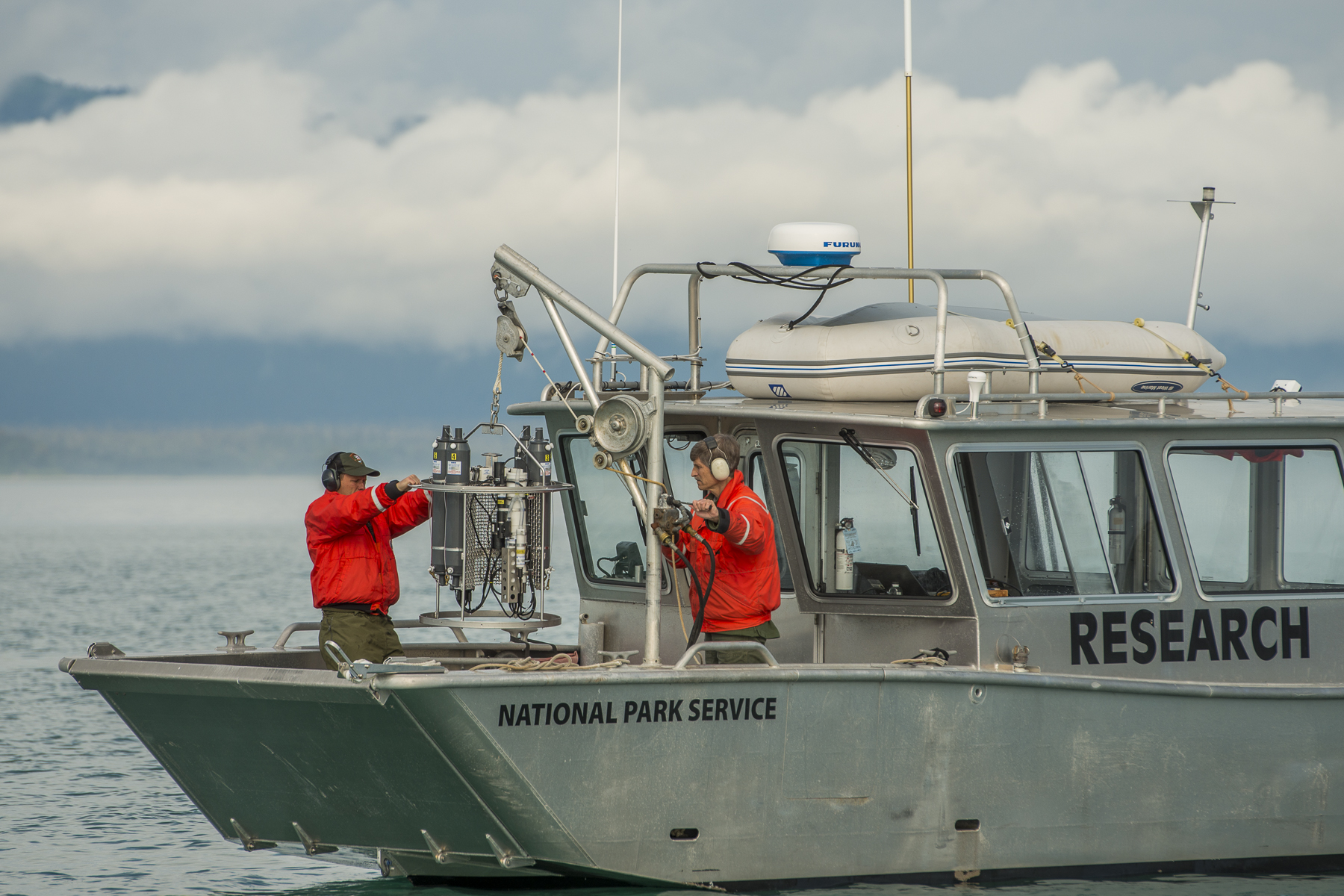Many will recall the North Pacific Ocean ocean warming event known as "The Blob" that began back in the fall of 2013. Water temperatures out in the open ocean were several degrees warmer than the long-term average. As recorded in an earlier post here , Glacier Bay didn't strongly "feel" The Blob in the first couple summers after its onset (2014-2015). But last year's El Nino seems to have exacerbated ocean warming, and at least in the main lower trunk of Glacier Bay mid-summer water temperatures have been significantly warmer in 2016.
Measurements taken during the July and August 2016 Glacier Bay oceanographic surveys show temperatures approximately 2 degrees C (5-6 degrees F) warmer at 250 meters depth compared to the long-term average. This is a big change for the ocean (just think how much energy it must take to warm all that water even slightly). Along with the warming, there appears to be a slight freshening of Glacier Bay, too, which may be a reflection of increased snow and ice melting on land during a warmer winter/spring/summer in 2016. Ocean salinity measurements during the last couple surveys this summer show fractionally less-saline water, especially at the surface (by about 3 parts per thousand, or 0.3%) - again, seemingly small, but a significant difference from the long-term average.

Caption: NPS scientists prepare to deploy an instrument that measures oceanographic parameters including water temperature and salinity.
Although climate and ocean scientists are saying that the original Blob feature no longer exists in its initial form, there's little doubt that the Gulf of Alaska remains much warmer than normal. Much of this warming was abetted by one of the strongest El Ninos on record this past year, and even as the El Nino itself now dissipates in the atmosphere, the ocean warming associated with it will require some time to follow suit. Oceanographers are now referring to a sustained "marine heatwave" as contributing to a still-warm Pacific Ocean, particularly in the Northeast Pacific. Recent data show that July sea surface temperatures in the Bering Sea, for example, were very significantly warmer than in past years.
El Ninos are typically followed the next year or so by a La Nina bringing cooler-than-average temperatures. For all things El Nino and La Nina see here (link to https://www.climate.gov/ens
